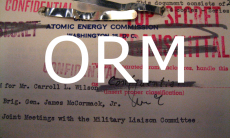I was a technology journalist for more than 20 years before taking a decade-long hiatus into social media marketing. Last year I returned to business journalism as a contract editor at a tech news site. I was stunned to learn that, despite seismic shifts in the media landscape during the time I was gone, public relations has actually changed very little.
That’s a shame, since the tools PR professionals can use to be a resource and even an ally to reporters are richer than they’ve ever been.
The amount of content most journalists are expected to produce today is three to five times greater than it was a decade ago. The way content is disseminated has changed, too. Much of what you read on new sites today is curated from other sources on the web. Brevity is prized, as are graphic images, video, and third-party commentary via tweets and email. Speed is valued over originality and completeness. Reporting is done by email and web search. SEO is critical and headlines need to provoke as well as inform.
Nevertheless, the vast majority of PR pitches I receive today look about the same as they did in 1995. The expectation is that the journalist will do all the research, writing, and due diligence, with the PR person acting mainly as a meeting facilitator and delivery agent. This attitude sells PR short. There is so much more PR pros can do these days to add value and develop journalism relationships by making the reporter’s job easier. Here are some ideas.
1. Personalize the pitch. Most pitches I read start off with faux familiarity (“Hi, Paul. Hope you’re having a great week!”) that I simply ignore. The single most effective way to get my attention is to demonstrate familiarity with something I’ve done. All it takes is a Google search and about 20 seconds of reading to create a customized pitch. The fact that you’ve invested in me makes it more likely that I’ll return the favor.
2. Give me facts. Supporting your pitch with research and third-party opinion makes my job easier. Include links to the source documents for verification. The more you can support your story with facts, the more believable your pitch, and the better the chance that I’ll cite those facts in my story.
3. Give me art. There’s a reason every article you read in any online news outlet today has a big image at the top: images increase engagement in social networks by 40 percent or more. Photos and videos capture attention and drive clicks, which is what news outlets crave.
This has been well-known for years, yet fewer than 10 percent of the press releases I receive today have associated images or video. So I have to scrounge around for visual content that, in all likelihood, is tangential to the story. That means that instead of posting an image that relates to your brand or message, I run with a stock photo. What a missed PR opportunity!
4. Promote me and my work. All journalists are expected to publicize their own work through their social channels. Make it easier for them by suggesting keywords and ideas for attention-grabbing headlines. Give me interesting factoids I can run in a sidebar. Then promote my story – and my name – in your own social channels. Help make me successful and I’ll be more receptive to you.
5. Make news tweetable. Even if I don’t have time to write your story, I may still have time to tweet it. Why not give me a short link and a suggested tweet with hashtags? This sounds like a no-brainer, but I can literally count on one hand the number of pitch letters I have seen use this tactic over the past 18 months. In fact, when I ask for a link to the web version of a press release, my request is frequently met with bewilderment.
6. Keep things in context. Not every announcement your company makes merits a half-hour PowerPoint presentation by an executive. When you act like everything is important, then you teach me that nothing is important. One of the best PR people I work with today sends me every announcement her company puts out, but she only requests meetings for the big stuff. As a result, she always get them.
7. Refer business. Nearly half of the full-time reporting jobs in the US media have disappeared over the last 10 years. That means chances are good that the reporter you’re pitching to is a 1099 freelancer working for multiple outlets. Imagine the goodwill you could create passing along work opportunities.
PR people are in an ideal position to do this. They deal with media all the time, so they can easily ask if new jobs or assignments are available. Matching opportunities with qualified candidates benefits all three parties. Find work for a reporter and you’ll make a friend.
8. Get out front of bad news. One day, a very good PR person I knew called to tell me his company was being sued by a customer. That was in 1984. The reason I remember that story is that no one has done it since.
Businesses are understandably reluctant to discuss bad news, but clamming up simply leaves it to analysts, competitors, and Twitter ranters to fill the commentary gap. There are certainly times when silence is best, but getting your point of view immediately in front of the media makes it more likely you’ll be heard. More importantly, it builds trust. The PR person who called me all those years ago had no business incentive to release bad news, but he had plenty of incentive to develop a relationship. Which he did.
The best PR people I’ve worked with have been the ones who tried to make my job easier. Journalists have never needed that help more than they do now.






